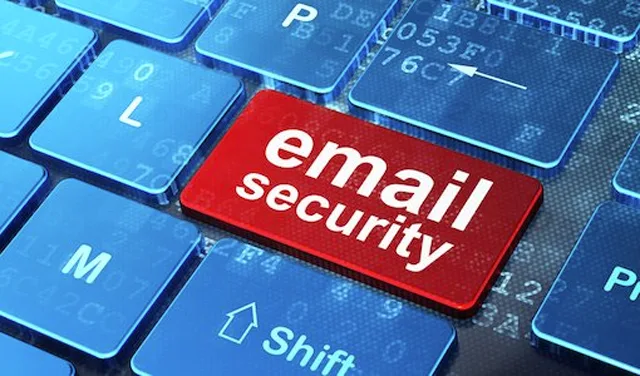How Do Hackers Use My Email Address

Your email address is a gateway to your digital life, connecting accounts, communications, and sensitive data. Understanding how do hackers use my email address is crucial to protect your digital privacy and prevent devastating cyberattacks. Hackers exploit email addresses for phishing, account takeovers, or identity theft, which can disrupt relationships and finances. This article explores these tactics, their legal implications, and practical cybersecurity tips to secure your email. At Hacker01, we use ethical hacking to help you stay safe online.
The Value of Your Email Address to Hackers
Email addresses are prime targets because they link to multiple accounts, from social media to banking. A Kaspersky report notes that 90% of data breaches start with email-based attacks. Hackers use compromised emails to access other accounts, send fraudulent messages, or steal personal data, impacting relationships and trust. Knowing how do hackers use my email address helps you prioritize data protection. Our cybersecurity tips for relationships explain how breaches affect personal connections.
Impact on Relationships
A hacked email can lead to unauthorized messages that strain relationships. For instance, hackers may send phishing emails to your contacts, posing as you, which erodes trust. Strengthening email security is essential to maintain digital privacy and protect personal bonds.
Legal Implications of Email Exploitation
Using an email address for malicious purposes, like phishing or unauthorized access, is illegal under laws such as the U.S. Computer Fraud and Abuse Act (CFAA). A U.S. Department of Justice resource outlines penalties, including fines and imprisonment. Ethically, hacking someone’s email, even in relationships, violates trust and legality. Instead, rely on ethical hacking services, like those at Hacker01, to secure your email legally.
Ethical Considerations in Relationships
In relationships, attempting to hack a partner’s email to monitor activity is unethical and illegal, often leading to broken trust. Open communication about digital boundaries is a better approach. Our protecting digital privacy in relationships guide offers trust-building strategies without invasive tactics.
Common Ways Hackers Exploit Email Addresses
To safeguard your email, you need to understand how do hackers use my email address. Below are the primary methods and how to counter them with cybersecurity tips.
Phishing Attacks
Hackers use email addresses to send phishing emails, tricking users into revealing passwords or clicking malicious links. These emails often mimic trusted sources, like banks or social platforms. Verifying sender identities can prevent these attacks, as detailed in our ethical cybersecurity practices.
Account Takeovers
With your email address, hackers attempt to reset passwords for linked accounts, like social media or banking, by triggering “forgot password” links. Two-factor authentication (2FA) and unique passwords ensure email security against takeovers.
Identity Theft
Hackers use email addresses to gather personal data for identity theft, accessing financial accounts or creating fraudulent profiles. Monitoring account activity and securing email with encryption prevent such risks.
Spam and Malware Distribution
Compromised email addresses are used to send spam or malware to contacts, spreading infections. Hackers may also attach malicious files to emails. Antivirus software and cautious email habits enhance data protection.
Actionable Cybersecurity Tips to Protect Your Email
Preventing hackers from exploiting your email requires proactive measures. Here are five practical steps to secure your email and counter how do hackers use my email address.
1. Use Strong, Unique Passwords
Create passwords with at least 12 characters, mixing letters, numbers, and symbols. Use a password manager to generate and store unique credentials, reducing the risk of account takeovers and ensuring account security.
2. Enable Two-Factor Authentication (2FA)
2FA adds a verification step, like a code sent to your phone, making it harder for hackers to access your email. Enable 2FA on providers like Gmail or Outlook for robust email security.
3. Monitor Account Activity
Check your email’s login history for unfamiliar devices or locations. Platforms like Gmail provide security logs. If suspicious activity is detected, change your password and log out unauthorized sessions immediately.
4. Be Vigilant Against Phishing
Avoid clicking links or downloading attachments from unknown emails. Use antivirus software, like Malwarebytes or Norton, to detect phishing attempts and maintain digital privacy.
5. Opt for Encrypted Email Services
Use providers with end-to-end encryption, such as ProtonMail, to protect your messages from interception. Encryption is a cornerstone of data protection, thwarting hackers’ exploitation attempts.
Ethical Hacking: Securing Your Email
Ethical hacking involves testing email systems to identify vulnerabilities that hackers exploit. By simulating attacks, ethical hackers provide insights to strengthen defenses. A CSO Online article highlights that ethical hacking prevents breaches proactively. Hacker01’s penetration testing services protect your email from malicious exploitation.
Hacker01’s Cybersecurity Solutions
At Hacker01, our certified ethical hackers conduct security audits to secure your email accounts. Our cybersecurity tips and tailored solutions ensure email security and digital privacy. Explore our approach in our why choose Hacker01 section.
The Role of Technology in Email Security
Advanced technologies, like artificial intelligence (AI) and machine learning, enhance email security. AI detects phishing attempts and unusual login patterns, while encryption protects message content. Ethical hacking leverages these tools to identify weaknesses, as offered in Hacker01’s cybersecurity consulting services. Email providers increasingly integrate these technologies to safeguard users.
Future Trends in Email Protection
Biometric authentication and AI-driven threat detection are shaping the future of account security. These innovations reduce the risk of email exploitation, ensuring long-term digital privacy.

Conclusion
Understanding how do hackers use my email address is vital to protecting your digital life. Through phishing, account takeovers, or identity theft, hackers exploit vulnerabilities, but strong passwords, 2FA, and ethical hacking can keep you safe. Hacker01’s cybersecurity solutions safeguard your digital privacy and relationships. Visit Hacker01 to explore our services and secure your email today.